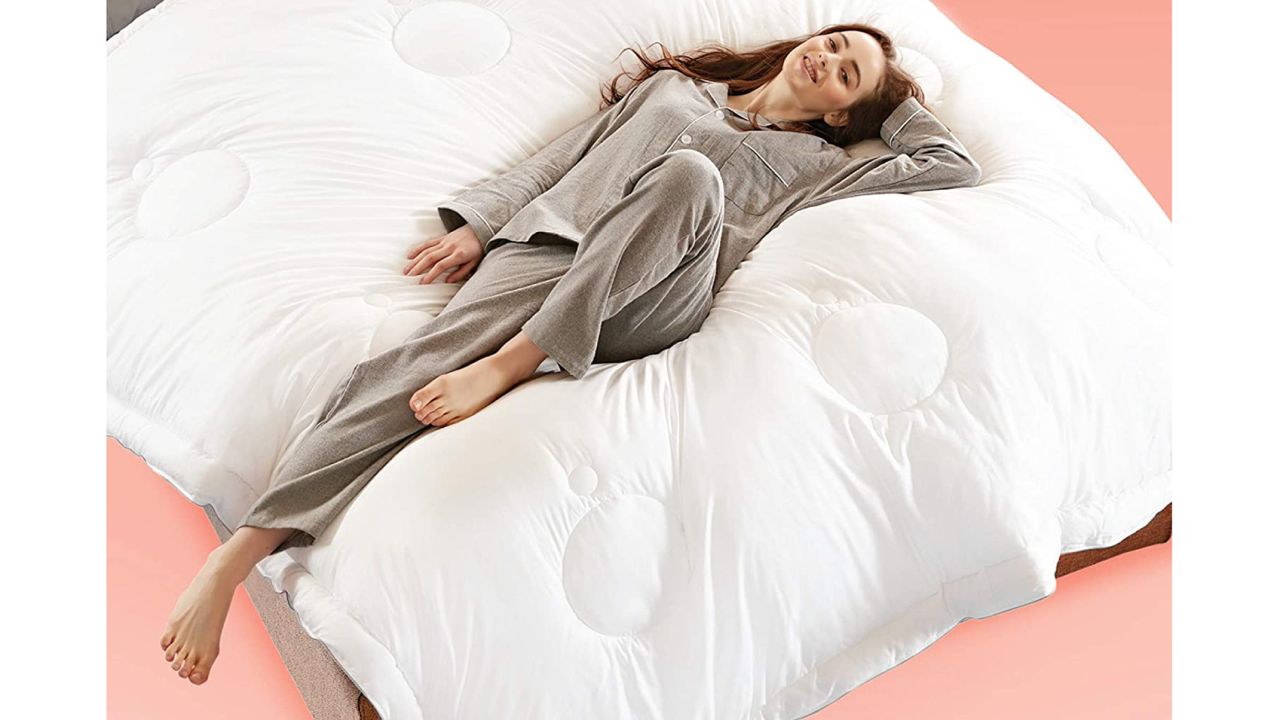Outline of the Article
- Introduction
- Understanding the concept of a “bed hot.”
- What is a Bed Hot?
- Definition and explanation.
- Causes of Bed Hot
- Various factors leading to a bed feeling hot.
- Importance of Addressing Bed Hot
- The significance of ensuring a comfortable sleeping environment.
- Ways to Cool Down a Bed
- Practical tips and strategies.
- Choosing the Right Bedding Materials
- Impact of materials on bed temperature.
- Ventilation and Airflow
- Improving circulation for a cooler sleep.
- Utilizing Cooling Technologies
- Overview of cooling mattress pads, toppers, and pillows.
- Regulating Room Temperature
- Setting the ideal conditions for better sleep.
- Avoiding Heat-Generating Activities Before Bed
- Activities to avoid to prevent a hot bed.
- Humidity Control
- Managing humidity levels for comfort.
- Positioning Your Bed
- Optimizing bed placement for cooler sleep.
- Personal Cooling Solutions
- Individual strategies for cooling down.
- Benefits of a Cool Bed
- Exploring the advantages of a comfortable sleeping environment.
- Conclusion
- Recap of key points and the importance of addressing bed hot.
Ways to Keep Your Bed Cool for a Better Night’s Sleep
Introduction
If you’ve ever experienced the discomfort of lying down in a bed that feels uncomfortably warm, you’re likely familiar with the concept of a “bed hot.” This phenomenon can disrupt your sleep and leave you feeling restless throughout the night. In this article, we’ll delve into the causes of bed hot and explore effective strategies to keep your bed cool for a more restful sleep experience.
What is a Bed Hot?
A “bed hot” refers to the sensation of heat and discomfort experienced when lying down on a bed that feels excessively warm. This can occur due to various factors, including the materials used in bedding, room temperature, and individual body temperature regulation.
Causes of Bed Hot
Several factors contribute to the sensation of bed hot. One common cause is the type of bedding materials used, such as synthetic fabrics that trap heat and prevent airflow. Additionally, room temperature and humidity levels can play a significant role in how hot or cool a bed feels.
Importance of Addressing Bed Hot
Ensuring a cool and comfortable sleeping environment is essential for achieving restorative sleep. Sleep quality can be greatly impacted by temperature regulation, with excessive heat leading to restlessness and discomfort throughout the night.
Ways to Cool Down a Bed
Fortunately, there are several effective strategies for cooling down a bed and promoting better sleep. One approach is to choose bedding materials that are breathable and moisture-wicking, such as cotton or bamboo fibers. These materials allow for better airflow and can help regulate body temperature during sleep.
Choosing the Right Bedding Materials
The type of bedding materials you choose can have a significant impact on bed temperature. Natural fibers like cotton and bamboo are highly breathable and can help wick away moisture, keeping you cool and comfortable throughout the night. Avoid synthetic fabrics, which tend to trap heat and contribute to bed hot.
Ventilation and Airflow
Improving ventilation and airflow in your bedroom can also help keep your bed cool. Consider opening windows or using a fan to promote air circulation, especially during warmer months. Additionally, investing in a mattress with built-in ventilation channels can enhance airflow and prevent heat buildup.
Utilizing Cooling Technologies
For those struggling with persistent bed hot, investing in cooling technologies such as cooling mattress pads, toppers, or pillows can provide relief. These products are designed to regulate temperature and provide a cooler sleep surface, promoting better sleep quality.
Regulating Room Temperature
Maintaining the right room temperature is crucial for preventing bed hot. Keep your bedroom cool and comfortable by adjusting the thermostat or using a programmable thermostat to set optimal sleeping conditions. Aim for a temperature between 60 to 67 degrees Fahrenheit for optimal sleep comfort.
Avoiding Heat-Generating Activities Before Bed
Certain activities can raise body temperature and contribute to bed hot. Avoid engaging in vigorous exercise or consuming caffeine or alcohol close to bedtime, as these can interfere with your body’s ability to cool down before sleep.
Humidity Control
High humidity levels can exacerbate bed hot by preventing sweat from evaporating and cooling the body. Use a dehumidifier or air conditioner to maintain ideal humidity levels in your bedroom, typically between 30 to 50 percent.
Positioning Your Bed
The placement of your bed within your bedroom can also affect its temperature. Avoid placing your bed near heat sources such as windows, radiators, or electronic devices that generate heat. Opt for a location that allows for adequate airflow and ventilation around your bed.
Personal Cooling Solutions
In addition to external factors, individual preferences and habits can influence bed temperature. Experiment with personal cooling solutions such as using a chilled pillow or applying cold packs to pulse points before bed to promote a cooler sleep environment.
Benefits of a Cool Bed
A cool bed isn’t just about comfort—it’s also essential for promoting better sleep quality and overall well-being. By optimizing your sleep environment for cooler temperatures, you can enjoy deeper, more restorative sleep and wake up feeling refreshed and rejuvenated.
Conclusion
Addressing bed hot is crucial for achieving optimal sleep quality and ensuring restful nights. By implementing the strategies outlined in this article, you can effectively cool down your bed and create a more comfortable sleep environment for better sleep.
FAQs (Frequently Asked Questions)
- How can I tell if my bed is too hot?
- Signs of a hot bed include excessive sweating, restlessness, and discomfort while lying down.
- Are there specific mattress materials that are better for cooling?
- Yes, natural fibers like cotton and bamboo are excellent choices for bedding materials as they are breathable and moisture-wicking.
- Is it necessary to invest in cooling technologies for a cooler bed?
- While not essential, cooling technologies such as mattress toppers or pillows can provide additional comfort and relief for those struggling with bed hot.
- Can adjusting room temperature help with bed hot?
- Yes, maintaining a cool room temperature between 60 to 67 degrees Fahrenheit can help prevent bed hot and promote better sleep.
- Are there any lifestyle changes I can make to reduce bed hot?
- Avoiding heat-generating activities before bed, such as exercise or consuming caffeine, can help lower body temperature and prevent bed hot.




